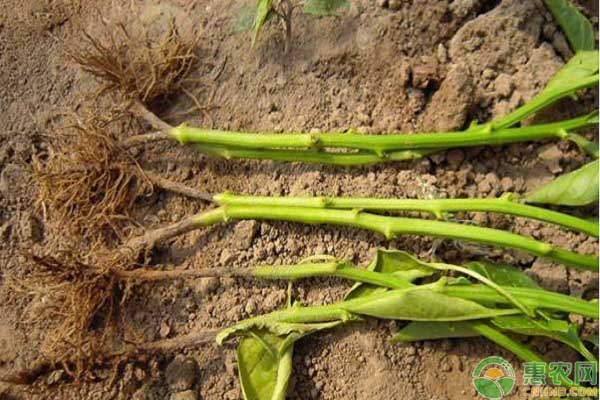For garlic, I believe that everyone is very familiar with it, and it is also one of the indispensable condiments in the family kitchen. At the same time, garlic is of high value in our lives, so it is very popular and concerned. In July and August, many areas in the north have begun to grow garlic, and we want to obtain high-yield and high-quality garlic. In addition to the characteristics of garlic that need to be understood, there is also a good management of pests and diseases. . So let's take a look at the causes and prevention methods of garlic root rot. The cause of garlic root rot The root rot of garlic mainly occurs during the sowing period. The main cause of root rot is the reason of inadvertent selection and unsterilized soil. In addition, the influence of high temperature and high humidity weather in July and August and the heavy weight of the planted soil cause the infection of the bacteria to cause root rot of garlic. In the early stage of the onset of garlic, it will start to rot from the root tip, and the roots will rot one after another. Finally, the plant will rot together with the garlic, and there will be foul odor in the rot, causing mantle and other parasitic pests. Prevention and cure method of garlic root rot The root rot of garlic should be started from the start of planting management. The suitable temperature for sowing should be kept at 18-20 °C. If it is in a cold area, the planting time should be arranged in conjunction with the weather changes. In addition, if there is a large area of ​​dry leaves and short plants after the garlic is returned to the spring, it must be paid more attention, because this is a typical precursor of root rot. It should be noted that the soil must be disinfected before sowing, which can effectively reduce the incidence of root rot. At the same time, it can prevent the occurrence of garlic root rot in the seeding with garlic. It is recommended to use 77% per 100 kg of garlic. Doiling WP 150g, Jin Tailong 200g and water 8kg evenly sprayed garlic, dried and sown. For the garlic field with root rot in the growing season, it can be sterilized (50% chlorobromoisocyanuric wettable powder) 30 grams per acre at the beginning of the disease, and the amino acid liquid fertilizer (such as Jin Tailong or Garlic protection) Agent) 200 grams of water plus 30 kg spray or root irrigation, prevention and control once every 5 days, and even 2 to 3 times. Plants that are seriously ill and dead plants should be removed from the field in time to prevent the spread of disease. The above is the introduction of the causes and prevention methods of garlic root rot. In general, not only root rot, but also the management of pests and diseases during the growth of garlic is the basis for achieving high yield. In addition, there is a small trick to reduce the source of the disease by reducing the source of the garlic and non-lily crops for 3 to 5 years, thus reducing the incidence of various diseases. For the wonderful pictures and hot comments about garlic root rot, you may be interested in the following recommended contents of Hui Nong. Welcome to read. Recommended reading: the symptoms, causes and prevention measures of strawberry root rot
Organic kale powder is processed from fresh kale. We strive to produce the best quality kale powder in the world. The entire production process is 100% organic and traceable.
Organic kale cultivation requires the following conditions. Our organic kale is planted in Hebei province, where the climate conditions are very suitable for kale growth.
1. Opulent sunshine.
Main processing technic: organic fresh kale, cut, clean air bubble wash, slice, dewatering and drying, steam sterilization (Temperature:>95°C Time:2′), powder.
1. 100% organic
Kale Powder,Organic Kale Cultivation,Organic Kale Powder,Air Dried Kale Powder Organicway (xi'an) Food Ingredients Inc. , https://www.organicwayince.com


2. Tastes best after a frost, so plant in early spring or late summer.
3. Sow kale from seed or nursery stock in late summer for a fall harvest or early spring for summer harvest. Sow seeds 1/2 inch deep, allowing 1 foot between plants and 2 feet between rows.
4. Mulch around kale plants with a heavy layer of garden compost. This keeps the soil cool, prevents moisture loss, and provides readily available nutrients to the shallow feeder roots.
Organic kale powder characteristics
2. non-GMO
3. Gluten-free
4. allergen-free
5. 100% pure vegetable powder without any additive
6. Fine kale powder